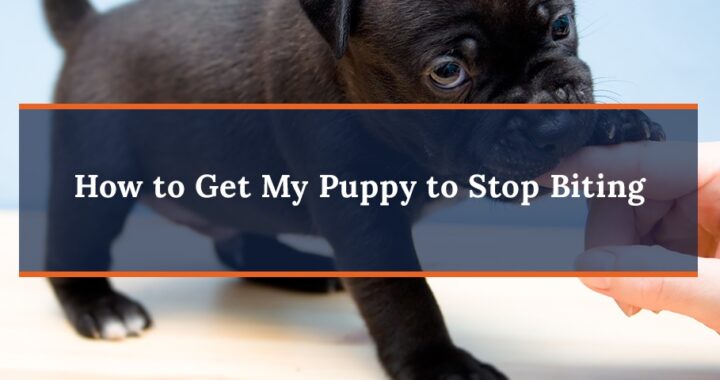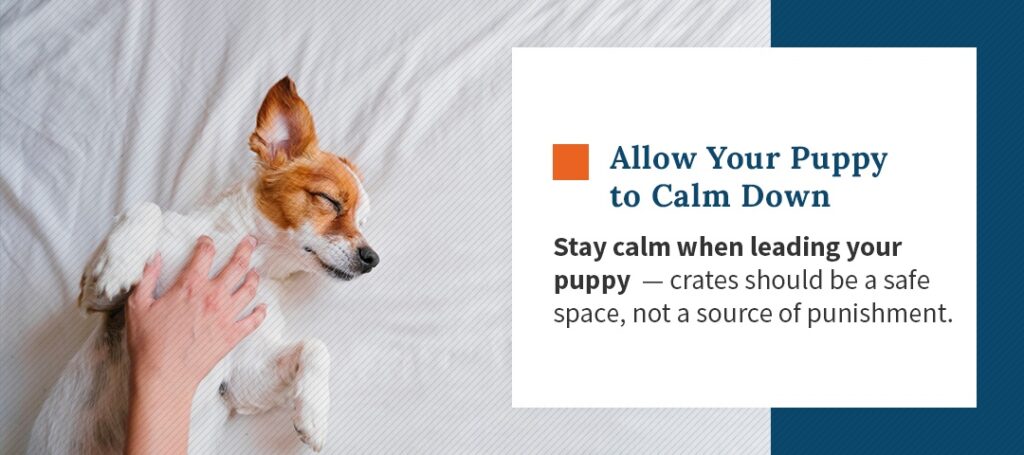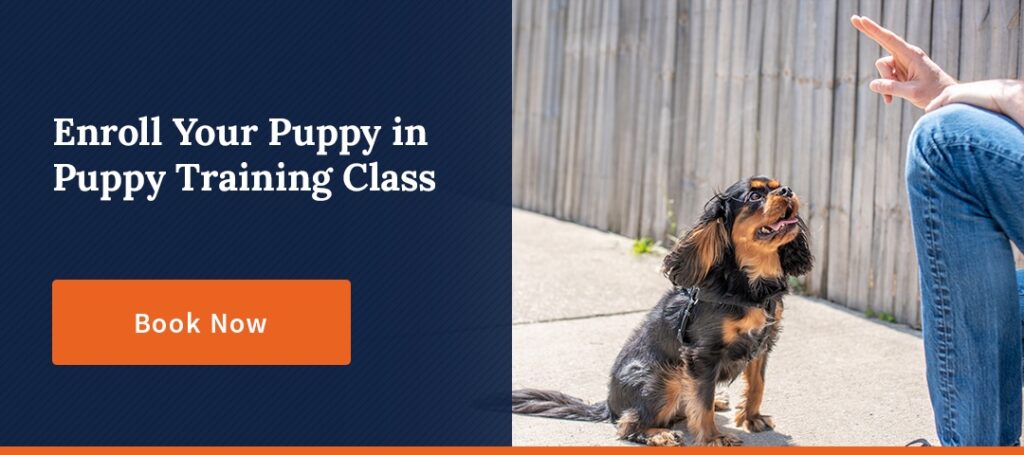Bringing a new puppy home is a joyful, memorable experience. It’s also a lot of work. Puppies are adorable little creatures who might seem determined to act up. They require a lot of attention and patience, much like toddlers. One of the most common puppy misbehaviors is nipping or biting, ranging from annoying to downright painful. While it might seem cute at first, it’s a behavior you’ll need to correct before your puppy grows into a full-sized dog with a dangerous mouth full of razor-sharp teeth. You may be asking yourself, “How do I teach my puppy to stop biting?” With a little patience and the right techniques, you can end this habit for good. Use these tips to stop puppy biting and nipping.
Stop Playing Once the Biting Begins
While playing together, puppies chase, wrestle, pounce and nip each other. When one bites another too hard, the victim will yelp and stop playing for a few seconds. This behavior teaches puppies bite inhibition, knowing if they’re too rough, they’ll lose their playmate. You can offer a puppy the same lesson he’d learn from his littermates.
Once your puppy bites, end playtime right away. You might let out a high-pitched yelp or “Ow!” to show your puppy he’s caused you pain. Instead of jerking your hand or foot away, try to make it go limp, which will be unexciting for your puppy. Jerking motions can activate the puppy’s chase instincts, which may cause more biting. Then, turn around and tuck your hands into your armpits, giving your puppy a playtime time-out. Even a negative reaction is a response — refuse to give your puppy attention after biting. Ignore your puppy for 10 to 20 seconds, then resume playing. Yelp and stop playtime for softer and softer bites until your puppy learns to play gently. If biting continues, take a break from playing.
Even if a bite catches you off-guard and hurts you, always skip negative reinforcement. Never hit, hurt or yell at your dog — physical punishments can make a dog fearful and likelier to be aggressive. Steer clear of any discipline that might make your puppy afraid of you, as this can develop into long-lasting fear aggression. When it comes to puppy biting training, naughty behavior should receive no attention at all.
Distract Them With Something They Can Chew On
Puppies need to teethe, but not on your fingers or toes. When your puppy starts nipping, offer a toy instead. You’ll teach your puppy toys are OK to bite, but your skin is not. If your puppy continues trying to bite you, turn away and pause playtime. You can incorporate toys into your play — use a toy for tug-of-war with your puppy. Have it nearby during playtime and take it out when your puppy gets nippy. Try to keep tugging from becoming too aggressive.
Having toys on hand creates an ideal opportunity to teach your puppy “let go” or “leave it” commands. When a puppy has a toy in his mouth, hold a treat nearby and say “drop it,” “let go” or “leave it.” Be gentle, but precise with your words. When he drops the toy, offer him the treat along with some praise. Eventually, this will teach your puppy to give you objects without getting defensive.
Allow Your Puppy to Calm Down
Puppies sometimes bite when tired or overwhelmed. When your puppy gets bitey, offer a chance to calm down. Lead them to a crate or quiet space. Stay calm when leading your puppy — crates should be a safe space, not a source of punishment. After allowing your puppy a few moments to calm down, let it start playing again. A puppy can also be agitated if hungry, thirsty or in need of a potty break. Make sure you’ve fulfilled all your puppy’s basic needs.
Plenty of exercise is essential for a growing dog. If you keep your puppy cooped up too much, the biting problem is likely to worsen. Let your puppy burn off excess energy throughout the day. Go for walks, play fetch and take advantage of nearby dog parks. Keep activities mild — you can stunt a puppy’s growth with too much strenuous exercise. Socializing with other dogs is an excellent way for your puppy to learn appropriate behaviors.
Always Reward Good Behaviors Instead
Positive reinforcement is a powerful tool and an important element of puppy training. Offer rewards when your puppy:
- Is calm, quiet and well-behaved.
- Follows a command.
- Accepts a toy in place of your hand or ankle.
The reward can be a simple “good girl” and a pat or a small treat — but be careful not to overfeed your puppy. Use these signals to teach your puppy proper behavior. They’ll soon associate good conduct with desirable results.
Discover which rewards your puppy seems to like best. It can help to make a list of possible rewards, in order of how happy they make your puppy. Save the best treats for the most challenging tasks. Offer rewards often enough to compete with natural ones in the environment. For instance, when teaching your puppy to heel, give enough positive reinforcement to make walking by your side more appealing than pulling you around, despite all the fun things outside. It’s also essential to deliver treats as soon as possible after observing the desired behavior, so your puppy makes the correlation. Over time, positive reinforcement teaches your puppy that learning is fun and following the rules is worth the effort. It’ll also support a strong bond between you and your puppy.
Puppy Training Classes Available in Howard County, MD
Puppies are lovable and adorable, but not always perfect angels. It takes a lot to raise a happy, healthy puppy. For the first few months with your puppy, it’s crucial to tailor your responses to their behavior. If you’re wondering how to keep a puppy from biting you, try the methods listed above. Use time-outs, distractions and toys to minimize biting. Always reward positive behavior with praise and treats.
Training a puppy can be challenging, as puppies can be unpredictable and hard to read. It’s always smart to enroll a puppy in a professional training class in Maryland. At Off Leash K-9 Training, we help you resolve puppy behavioral issues while building stronger trust with your puppy. With our private lessons, you and your puppy will get all the individualized attention you need. We’ll help you master the necessary skills and commands while addressing unwanted behaviors like nipping. We offer various packages — you can choose from an all-inclusive puppy camp, several private lessons or a single refresher course. Enroll your puppy in a puppy training class with Off Leash K-9 training today!



